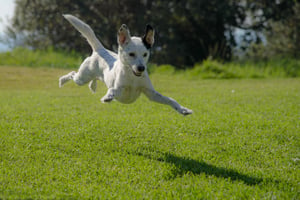Puppy biting can be a common problem for new dog owners. Fortunately, there are many methods that...
Training Puppies Not to Bite: A Guide
Training a puppy not to bite is an important part of pet ownership. It is essential for the safety of both the puppy and its owners. Teaching a puppy not to bite requires patience, consistency, and positive reinforcement. This article will provide a comprehensive guide on how to train your puppy not to bite.
Why Do Puppies Bite?
Puppies bite for a variety of reasons. They may bite to explore their environment, to play, to assert dominance, or to express fear. It is important to understand why your puppy is biting in order to address the issue.
Provide an Appropriate Chew Toy
Puppies have a natural instinct to chew. Providing an appropriate chew toy can help redirect their urge to chew away from your hands and feet. When your puppy is chewing on the toy, reward them with positive reinforcement. This will help them understand that the toy is an acceptable object to chew on.
Redirect Your Puppy's Attention
When your puppy begins to bite, redirect their attention to another activity. This could be playing with a toy, going for a walk, or even just snuggling. This will help your puppy understand that biting is not an acceptable behavior and will help them learn to focus their attention elsewhere.
Be Firm and Consistent
When your puppy bites, it is important to be firm and consistent. Do not give in or give them attention when they are biting. Instead, firmly say “no” and remove yourself from the situation. This will help your puppy understand that biting is not an acceptable behavior.
Provide Positive Reinforcement
Positive reinforcement is one of the most effective ways to train a puppy not to bite. Whenever your puppy is not biting, reward them with treats, verbal praise, or other forms of positive reinforcement. This will help your puppy understand that not biting is an acceptable behavior.
Be Patient
Training a puppy not to bite takes time and patience. It is important to be consistent and provide positive reinforcement in order to help your puppy understand that biting is not an acceptable behavior. With patience and consistency, your puppy will eventually learn not to bite.
Conclusion
Training a puppy not to bite is an important part of pet ownership. It is essential for the safety of both the puppy and its owners. Teaching a puppy not to bite requires patience, consistency, and positive reinforcement. Providing an appropriate chew toy, redirecting your puppy’s attention, being firm and consistent, providing positive reinforcement, and being patient are all important steps in teaching your puppy not to bite. With patience and consistency, your puppy will learn not to bite and will be a safe and happy pet.



